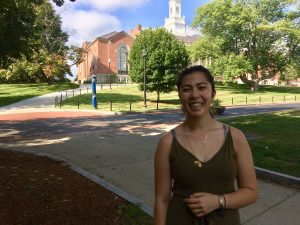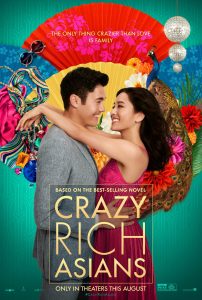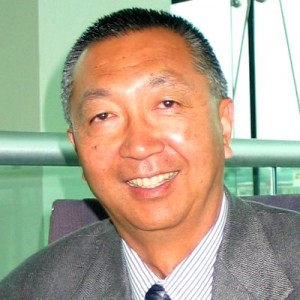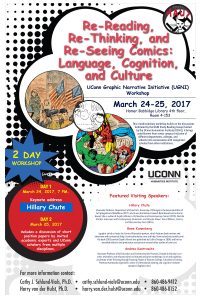Asian/Asian American Studies Institute Awards $500 each to Undergraduate students FOTIMA PULATOVA and ZUKHRA PULATOVA and $1000 to Graduate student KOYEL KHAN as the Recipients of the 2017 HIRA JAIN SCHOLARSHIP
The Asian and Asian American Studies Institute in the College of Liberal Arts and Sciences is extraordinarily indebted to Dr. Hira and Mrs. Sunita Jain of Glastonbury, CT for their generosity in establishing the permanent endowment that funds this competitive scholarship, awarded since 2004.
Profiles of the Award Winners
Entry 58 in the KEYWORDS for Asian American Studies (NYU Press, 2015) elaborates on “transnationalism” as a term that is both prominently used and contested in the various disciplines that cover the social sciences, anthropology, sociology, international law, economics, feminist studies, and cultural studies. Encapsulating the ways goods, people and ideas move and resettle, the transnational paradigm “recognizes the intricate mapping of social experience across axes of time and space and allows for a broader understanding of the ways cultures and identities circulate both nationally and transnationally.”
FOTIMA and ZUKHRA PULATOVA are twin sisters who are each majoring in Molecular Cell Biology with identical dreams of becoming physicians in the United States. They are inspired by their grandmother who practiced medicine in an impoverished region of Uzbekistan and motivated by the sacrifices of their mother, from whom they were separated for seven years in order to immigrate to Brooklyn, NY after the economic and political upheavals in their home country following the collapse of the USSR. Not able to have her advanced degrees recognized in the US, Fotima and Zukhra’s mother took on low paying yet crucially needed jobs as a domestic worker.
Arriving in the US, the first order of business for Fotima and Zukhra was to learn the English language which both unequivocally say is more difficult than their native Uzbek, Russian, and Mandarin (having been sent to Northwest China to study when their grandmother became unable to continue to care for them). With supportive professors and classmates at Manchester Community College, they excelled in ESL and earned their Associates Degree in Liberal Arts and Sciences before successfully transferring to UConn. Both express tremendous appreciation for the social support and academic preparation they received at MCC.
At the University of Connecticut, they are active members/participants of the Phi-Theta Kappa Honor Society, Alpha Mu Gamma Honor Society, American Medical Student Association, and the Asian American Cultural Center – all while maintaining GPAs above 3.55, receiving the Academic Support Center’s Student Achievement Award, and working part-time as caregivers for Euro-American Connections & Homecare to help pay for tuition. If at first they both experienced “transfer shock” in the large and impersonal classes at the university, they are now eager to engage their fellow students about their Central Asian experiences and culture – even as they carefully negotiate what is possible.
“Everybody smiles here … we were discouraged from smiling for no particular reason. UConn students are very positive, free and open with opinions … opinions were also discouraged before we came here. Here, we can disagree … we are not afraid to share.”
There is absolutely no doubt Fotima and Zukhra Pulatova will each work diligently to realize their respective dreams to practice medicine; they will doubtless also share the credit for their achievements with their mother. We wish them all the best, wherever fate and opportunity take them.
KOYEL KHAN is a doctoral candidate in the department of Sociology who is in the process of collecting data by conducting ethnographic interviews in Kolkata, India and New York City for her dissertation, tentatively titled “Between Nationalism and Neoliberal Globalization: The Practices of Indian Classical Dance” that is a transnational and interdisciplinary analysis of the factors that shape cultural consumption, production and practice. Historically used to reinforce difference and superiority in the struggle against British colonialism and currently signifies being cultured and authentically Indian, she will specifically investigate how people associate with these cultural practices in different geopolitical settings and how that relates to their ethnic identity in our contemporary global era.
And indicative of future success as a research scholar, Koyel is already co-author of a book chapter with UConn Prof. Bandana Purkayastha and UConn alumna Shweta M. Adur that analyzes the cultural performances of second-generation Indian/South Asian Americans.
Ms. Khan is also already a highly-regarded instructor, winning her department’s Outstanding Graduate Teaching award in 2016 and achieving impressive teaching evaluations for challenging courses that cover race and racism, gender and sexuality, human rights, social construction of deviance, and developing societies from a critical transnational perspective.
As a letter supporting her application attests, teaching these subjects “can pose extraordinary burdens for instructors who are perceived to be different … female, young, non-white … get lower evaluation scores … [And] these ‘intangible’ factors lead to an uneven teaching terrain for instructors like Koyel. [So] when she gets high scores, as she consistently does, she has navigated a much rockier road to achieve those levels than most of her peers.”
When there is spare time, Koyel’s commitment to making the academy more inclusive and communities more socially just is demonstrated by her active participation in TARANG, UConn’s South Asian cultural organization organizing performances at Yale and Stamford Public Library; summer teaching in the Center for Academic Programs (SSS), which prepares first generation college students; and serving “with courage and integrity” on the Graduate Program Committee, where she brings together US and international students of color to create opportunities to help close the gap between privilege and marginalization. Koyel Khan is a true asset to UConn and we are delighted to announce she has been selected for this well-deserved distinction.
Please join us in heartily congratulating FOTIMA PULATOVA, ZUKHRA PULATOVA and KOYEL KHAN as the 2017 Hira Jain Scholarship award winners.
About the Hira Jain Scholarship
The Hira Jain Scholarship recognizes academically outstanding undergraduate or graduate students enrolled full time at the University of Connecticut. Applicants for the scholarship may, but are not required to demonstrate financial need. The Institute administers the scholarship and invites applications every other year (biennial). Awards have ranged from $1000 to $2500, and announced before the close of the spring semester it is awarded.
Contact Ms. Fe Delos-Santos for eligibility questions and application forms.
Profiles and Photos by Fe Delos-Santos for the Asian and Asian American Studies Institute / CLAS



